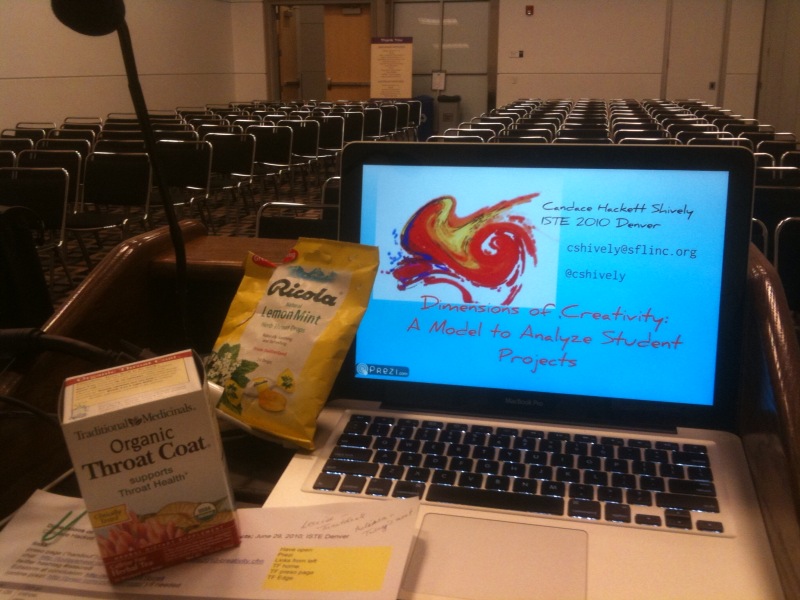Teaching and Creativity, Part 1: Talk about it
At ISTE I presented on Dimensions of Creativity, using Guilford’s classic (and OLD) model of divergent thinking as a launch point. A few days later, Newsweek ran an excellent article, The Creativity Crisis, on declining creativity scores among adults and chldren in the U.S. since 1990. The research used for the Newsweek article is also from a classic source on creativity: Torrance’s test that began in the 1950s. Classic? Yes. Old? Definitely. Still powerfully meaningful? Absolutely. But how do we move beyond talk and study about creativity to foster it, use it, value it, protect it, and allow it to thrive among both children and adults? As Newsweek’s companion article points out and every teacher knows, you can’t just say, “Now be creative. You have 42 minutes.”
The companion Newsweek article suggests breaking away from multitasking and screentime, getting moving, exploring other cultures, or following a passion to promote creativity (not formal “creativity training”). This may be generally true and especially true for adults, but there is much more we can do in schools and homes with children and teens to think about thinking, especially to give words to creative process — even with young ones — so we have ways to share, question, and protect our most creative impulses as something that is valued and valuable. Creativity should not be treated as the bathroom of the intellect, the thing polite/serious students and teachers do not talk about in the world of learning. We SHOULD talk about this most important bodily function of the brain. We should make it part of learning at every age and in every subject, not just in Art class.
So, at the risk of being criticized for presenting a formulaic “creativity exercise” approach, I write this series to dig more deeply into FFOE, Guilford’s model and how it fits into any classroom. Future posts will focus specifically on Fluency, Flexibility, Originality, and Elaboration, the components of FFOE.
- a second grade teacher asked what it feels like when you draw…or sing your own song
- a sixth grade teacher thought out loud about why that student’s joke made him laugh
- a science teacher talked about all the lessons she considered using to show how sound waves work and the apparatus she built that did not work–how she even considered having the entire class watch a video of a crowd doing the wave– and doing it in class. What if she DID the wave?
- the same science teacher asked aloud, “I had no trouble being fluent with ways to envision what sound does. How about you?”
- a eighth grader could explain his frustration with school rules, “The principal doesn’t have the flexibility to put himself in our shoes and see how it feels to be rushed at our lockers. We need to consider other ways to solve the hallway congestion.”
- a group of high schoolers working on a civics project:” we may not be completely original in our way of explaining the Constitution, but some of the ways we elaborate with examples, visuals, and sounds will help kids get it better.”
- in a current events discussion: “BP pulled in all those engineers for their suggestions. You would think that someone would have an original idea, but many of them only have ONE idea to offer instead of being fluent enough to keep on thinking and possibly finding a new way.”
- in English class: “I really had trouble finishing the poem. Trying to think of an image to express how cold that sky looks is hard for me. I need to let it incubate and keep a writer’s notebook to maybe get more fluent.
- in history class, a student says: “I know this is off the wall, but what do you think would have happened if they’d had YouTube in the American Colonies?” and someone responds, “love that original thought!”
- the science lab had a graffiti wall for questions: “Which is more important, oxygen or light?” The handwriting is not the teacher’s.
- every student had a place to ask the questions in his/her head
While this weak attempt to envision talk about creativity and creative process is “lame,” as the middle schoolers would say, that is exactly the point. We need to move beyond the place where creativity is viewed as “lame” in our homes and schools. Let’s at least talk about it.
Next time: Finding Fluency







